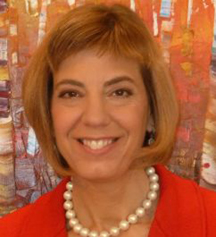Of the nine films nominated for Best Picture, four have themes or sub-plots related to disability.
“Fences,” a film that has received multiple accolades for its racially diverse themes, also includes a disability storyline. Lead character Troy Maxson (Denzel Washington)’s older brother Gabe Maxson (Mykelti Williamson) sustained a traumatic brain injury (TBI) during World War II. Children in the neighborhood often torment Gabe. When Troy bails Gabe out of jail for disturbing the peace, Troy unknowingly signs a paper that routes half of Gabe’s pension to a psychiatric hospital, forcing Gabe to be institutionalized.
Other examples include “Manchester by the Sea,” which includes themes of mental health, alcoholism, and drug use. Likewise, “Moonlight” includes story lines surrounding drug addiction. “Arrival,” a science-fiction film, includes a child who dies from cancer.
But while these films include disability themes, no known actor or other individual with a disability was nominated for an Oscar. More than 95 percent of characters with disabilities are played by able-bodied actors on television. When an able-bodied actor mimics someone from any minority group, whether it be racial or disability, he takes a job from an actor who genuinely has that characteristic and perpetuates that group’s under-representation in the industry.
One film that exemplified the positive portrayal of disability this year is “Finding Dory,” yet it was not nominated for an Oscar. It was the number one film at the domestic box office last year. Financial successes like this film show that positive portrayal of disability is a winning theme. In “Finding Dory,” disability is not something Dory needs to overcome, but something she needs to learn to live with, accept and work with to accomplish things “in her own Dory way.”
Including Disability in Diversity
“Fences,” as well as “Moonlight” and “Hidden Figures” are films nominated for best picture that have been noted to be racially diverse. In addition, six Black actors have received a nomination, which is a record high.
Ebenezer AME’s Heritage Weekend: Working Hard to Connect Us
“The studios and major film distributors really gave it to us this year,” said Gil Robertson, the African American Film Critics Association’s co-founder and president. “By any measurement, it’s been an exceptional year for Blacks in film. From comedies to high-quality dramas and documentaries, 2016 will forever represent a bonanza year for Black cinema, and all cinema really.”
When an able-bodied actor mimics someone from any minority group, whether it be racial or disability, he takes a job from an actor who genuinely has that characteristic and perpetuates that group’s under-representation in the industry.
In a statement, Robertson also spoke of the importance of other minority communities, listing out the “Asian, Hispanic, Native American, and LGBT communities,” but he failed to include the disability community – a common occurrence even among the best intentioned.
People with disabilities are the largest minority in America, with almost one-in-five Americans having a disability. Yet the disability community often is forgotten in diversity conversations. According to GLAAD, fewer than two percent of scripted television characters (15) have disabilities.
In addition to the lack of representation in general, what does exist is misleading. Almost all portrayals of people with disabilities in media are White, despite the fact that disability impacts all ethnicities. According to a recent report by The Media, Diversity, & Social Change (MDSC) Initiative at University of Southern California’s Annenberg School for Communication and Journalism, only 2.4 percent of all speaking or named characters in film were shown to have a disability in 2015 and none of the leading characters were from underrepresented racial or ethnic groups.
“Depictions of disability are not only marginalized,” the report says, “they also obscure the true diversity of this community.”
It is important to note that anyone can join the disability community at any point in time and that people with disabilities come from all communities – including the African American, Asian, Hispanic, Native American and LGBTQ communities.
When an able-bodied actor mimics someone from any minority group, whether it be racial or disability, he takes a job from an actor who genuinely has that characteristic and perpetuates that group’s under-representation in the industry.
In a statement, Robertson also spoke of the importance of other minority communities, listing out the “Asian, Hispanic, Native American, and LGBT communities,” but he failed to include the disability community – a common occurrence even among the best intentioned.
People with disabilities are the largest minority in America, with almost one-in-five Americans having a disability. Yet the disability community often is forgotten in diversity conversations. According to GLAAD, fewer than two percent of scripted television characters (15) have disabilities.
In addition to the lack of representation in general, what does exist is misleading. Almost all portrayals of people with disabilities in media are White, despite the fact that disability impacts all ethnicities. According to a recent report by The Media, Diversity, & Social Change (MDSC) Initiative at University of Southern California’s Annenberg School for Communication and Journalism, only 2.4 percent of all speaking or named characters in film were shown to have a disability in 2015 and none of the leading characters were from underrepresented racial or ethnic groups.
“Depictions of disability are not only marginalized,” the report says, “they also obscure the true diversity of this community.”
It is important to note that anyone can join the disability community at any point in time and that people with disabilities come from all communities – including the African American, Asian, Hispanic, Native American and LGBTQ communities.
Advertisers | Contact Us | Events | Links | Media Kit | Our Company | Payments Pier
Press Room | Print Cover Stories Archives | Electronic Issues and Talk Radio Archives | Writer's Guidelines







